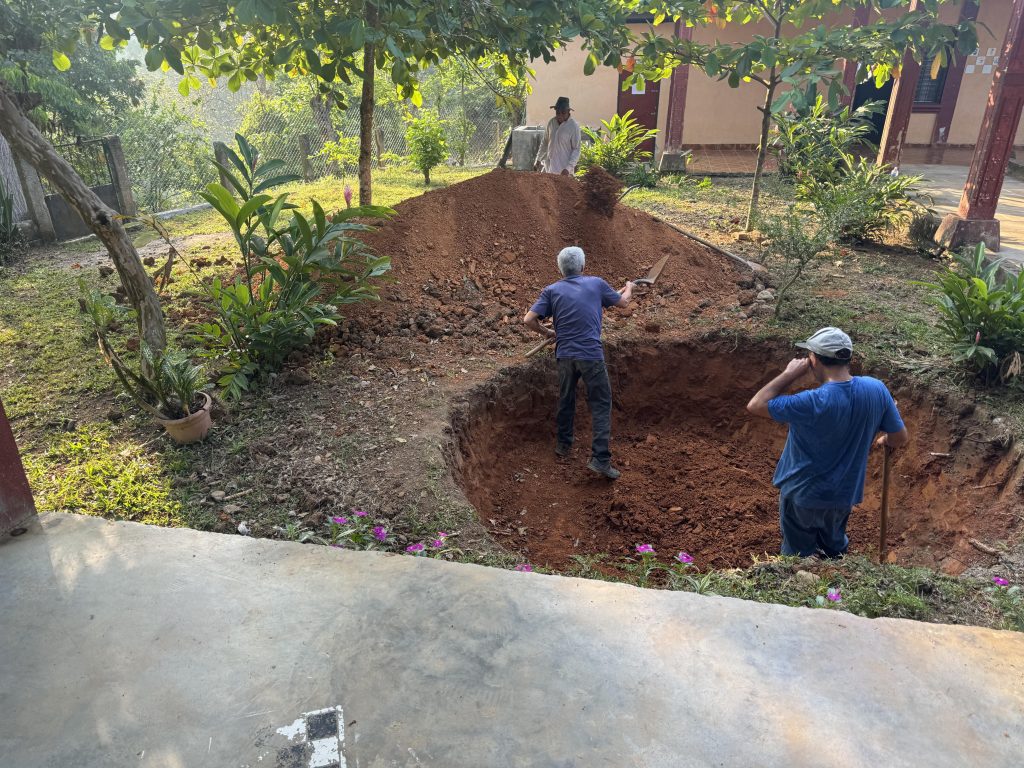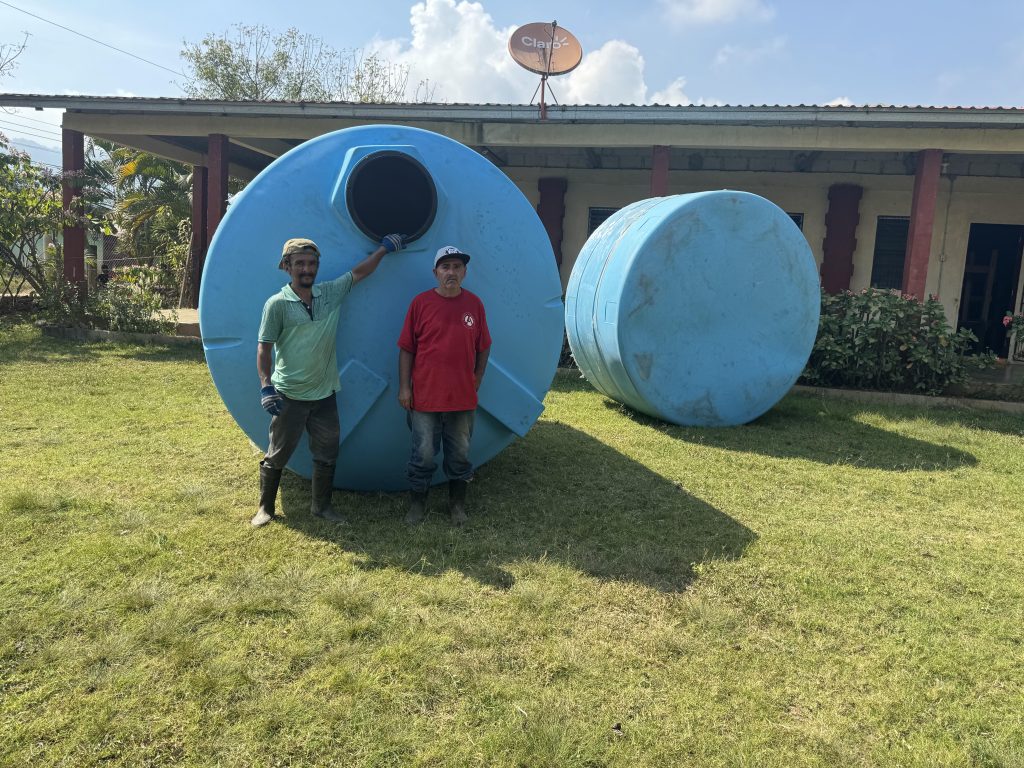
Water – the most basic human need and one we certainly take for granted here in the USA. Imagine trying to provide medical and dental services to your rural community when you have running water for only 2 or 3 hours per day or even not at all. Our Hombre a Hombre Clinic in San Jose del Negrito, Honduras, has been facing these conditions for years, complicated additionally by persistent drought and water shortages from the standard local water authority. The Clinic’s Health Committee told our brigades and our Board of Directors here in Pittsburgh that this has been their most pressing need to safeguard the health of the community. We are grateful and delighted to report that, through the donations of many of you, and with the sweat equity of the Health Committee, this vision of a plentiful water supply is becoming a reality!
So how could we design a system that would ensure reliable water service to this rural mountain community? First, it had to require little or no electricity, due to sporadic electric service. Second, it needed to include significant water storage capacity in order to provide a consistent water supply. Members of the Health Committee joined forces with Bill Molyneaux (a Shoulder to Shoulder Pittsburgh Board Member), and an engineer in Honduras to design just such a system.
The system consists of 2 large heavy plastic tanks. The smaller of the 2, with a 5,000-liter capacity, is elevated and on a large platform. This gravity-driven water is plumbed directly into the clinic and the adjacent dormitory, where Dr. Tania lives with her family and where our brigade members stay. This part of the system is already operational! The second “rain catchment” tank – 10,000 liters – is partially buried underground and will collect water from the roofs, which then will be treated and pumped into the elevated tank as needed. The work on this second tank should be completed by September. The clinic staff will be able to properly wash hands, clean patient wounds, and accomplish multiple other tasks. With proper quarterly maintenance, the tanks should last for 20 years.
We extend our deepest appreciation and gratitude to the hardworking members of the Health Committee, especially Felix and Omar, who provided the labor for this project. They dug the hole for the underground tank with picks and shovels, poured a concrete base for the tank, cut and welded the metal support bars for the elevated tank, and multiple other tasks. And thank you to our donors who designated funds toward this life-giving project! Your generosity has brought new hope and greatly improved working and living conditions to the clinic staff and to the good people of San Jose!






